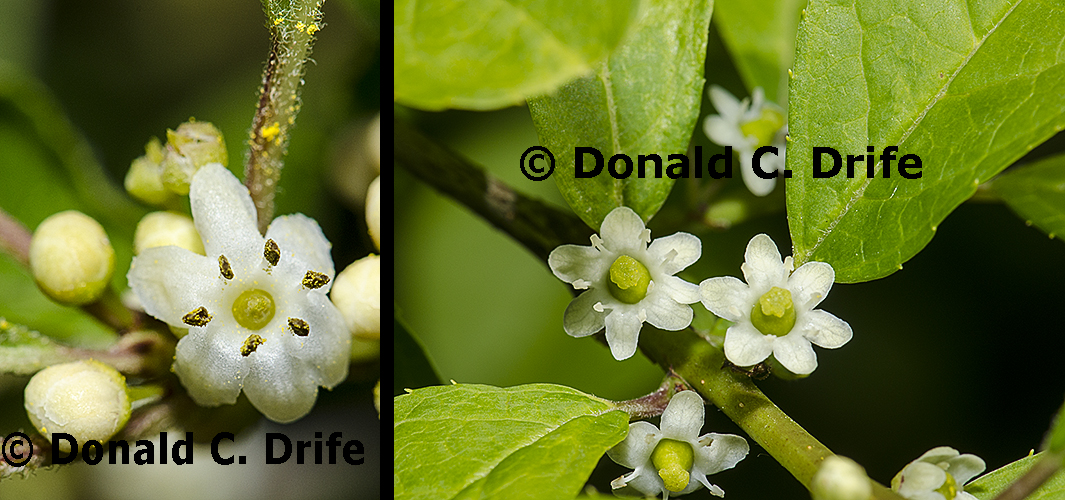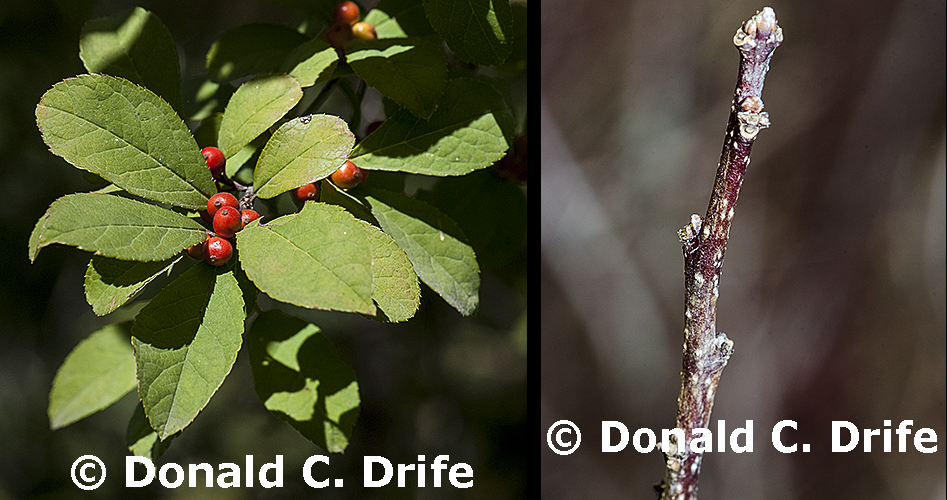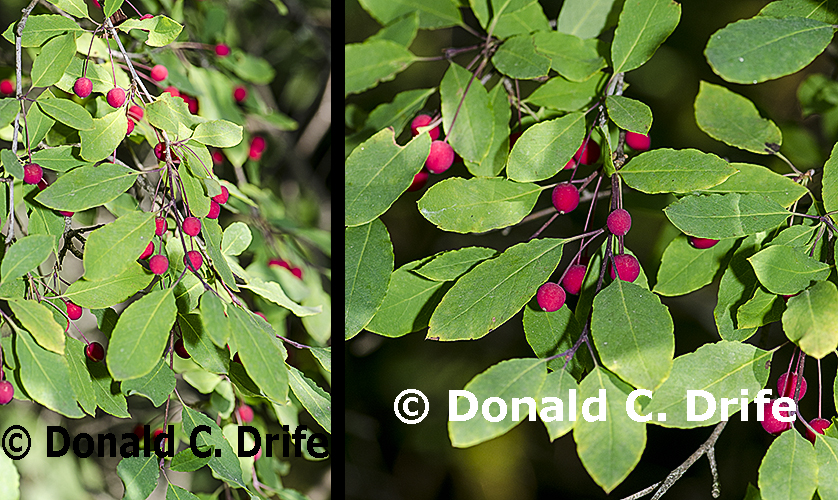Recently a friend showed me a photo of a red-berried shrub she did not know. It was Michigan Holly (Ilex verticilata). If you are not from Michigan, you probably call this Winterberry or Black-alder. It can be showy this time of year with bright red berries (drupes) on dark bare branches. It grows in wet areas but not standing water. It likes to have its roots dry out a little each year.
Michigan Holly flowers when the leaves are fully developed. Male and female flowers occur on different shrubs. They are insect pollinated. Flowers are whitish with a tinge of yellow or green. Although small, I find them attractive.
The leaves are stalked, coarsely toothed, broadest at the middle, two or three times longer than wide, and have a pointed tip. Their upper surface is dark green, darker than most other species.
The bright red fruit is technically called a drupe. Drupes have stony pits surrounded by soft flesh. Cherries are drupes. It is short stalked and persists into winter. Wildlife feed on them. I have seen wintering robins strip a shrub in an hour.
Mountain Holly (Ilex mucronata) is our other native holly. It has leaves that are entire (toothless), bright pink or purple fruit on long stalks, and normally grows as a single trunk. This has been called Nemopanthus mucronatus.
American Holly (Ilex opaca) is our typical Christmas holly. It is native south of Michigan but is now escaping into forests in southern Michigan. Unlike our native holly species this one is evergreen, but its leaves sometimes dry out in the winter.
You can find Michigan Holly by driving rural roads. The bright red fruit is evident from a distance, especially on a sunny day. Get out and look for it.
Copyright 2018 by Donald Drife
Webpage Michigan Nature Guy
Follow MichiganNatureGuy on Facebook






